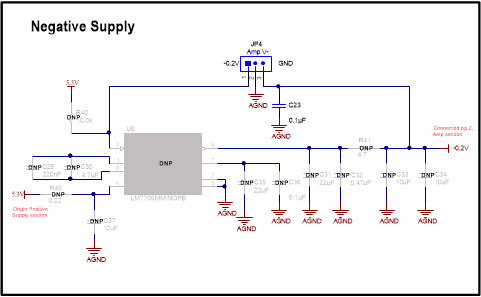SBAU269C October 2016 – August 2021 ADS8900B
4.2 Negative Supply
The negative supply, as shown in Figure 4-2, is not installed on the EVM but can be populated in the rare circumstance that this option is desired. The purpose of this negative charge pump is to generate a small –0.23-V power-supply rail for the FDA driver amplifier to assure that the amplifier can swing to 0 V without an output swing limitation. This feature is needed to run the linearity sweep for the EVM because the linearity test requires a linear sinusoidal input signal that drives below 0 V and above 5 V (that is, a saturated input). Without the negative charge pump, the THS4551 amplifier distorts when its output approaches 0 V.
 Figure 4-2 Negative Supply
Figure 4-2 Negative Supply